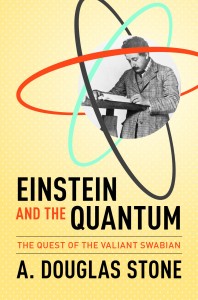What Goes Up…
This week saw a surprising number of things leaving our home sweet home, the planet Earth, including India’s MOM (not a joke: it stands for Mars Orbiter Mission). If it’s successful in reaching the red planet in 2014, it’ll be only the fourth space organization to get there, after Russia, the USA, and the ESA.
The olympic torch took a trip on this week’s Soyuz launch to the ISS, and the astronauts there have gone so far as to take it with them on a space walk.
For fans of social media, along with the torch went US flight engineer Dr. Karen Nyberg, who, like her predecessor retired commander Chris Hadfield, has a twitter account. She lost no time at all has spent a great deal of time posting images from space, yesterday tweeting this photo of supertyphoon Haiyan.
Dr. Nyberg can be found at @AstroKarenN, and if you’re on twitter you should definitely, definitely follow her (and maybe me, too).
Edit: This post previously reported that Dr. Nyberg went up with the November 7 launch, when in fact she went up with Soyuz TMA-09M, which launched on May 28, and has returned to Earth on the day of this update, November 11. Those aboard the ISS at present are Commander Oleg Kotov, and Flight Engineers Richard Mastracchio, Koichi Wakata, Mikhail Tyurin, Sergey Ryazanskiy, and Mike Hopkins.
Meanwhile the ESA’s GAIA launch was pushed back due to fears that a defective timing component could create problems with telemetry readings. The ESA’s GAIA blog reports that the mission has been rescheduled for December 20.
And in the commercial space industry, Sir Richard Branson’s SpaceShipTwo is set to complete its third flight in the space of a month, meaning it’s just about ready to start its long-awaited commercial launches. The first commercial launch will, of course, be televised on a three-hour segment of NBC’s The Today Show.
…Must Come Down
The results of the studies of the Chelyabinsk meteor strike have been published this week in the journals Science and Nature, prompting (among more sober reporting) ever-popular articles about the impending doom represented by asteroids. Popular Science has a good round-up of what the studies actually tell us. And Quirks and Quarks this week has an interview with Dr. Peter Brown of Western University in Ontario, for a more user-friendly explanation of the results.
In other “falling to Earth” news: do you feel lucky? You shouldn’t need to be, but just so you’re aware, GOCE (the ESA’s Gravity Field and Steady-State Ocean Circulation Explorer) will be falling back to Earth Sunday or Monday, and they’re not entirely sure where. Not to worry, though, you’re more likely to win a dozen lotteries than be in the 13 to 18 meters squared that it will strike, somewhere on the somewhat-larger-than-that Earth.
(Also, even though the illustration for the Independent article is an artist’s rendering (made a year before the GOCE’s 2009 launch), it really does look that cool.)
And there are stranger things in Heaven and Earth, Horatio…
“Astronomers who spotted the strange, fuzzy-looking rock hurtling through space, first with the Pan-STARRS telescope in Hawaii and later with NASA’s Hubble Space Telescope, are calling it a “weird and freakish object”—and that’s only the language they’re willing to put in their press release.”
And if you don’t know about it yet, Wired has been doing a “space photo of the day” since at least January of the year, and the results are more or less fantastic.
Finding Old Bits and Making New Ones
Biomedical company Organovo reports this week that they have managed to print a sheet of liver cells which seem to function like regular liver cells for up to 40 days, even responding to Tylenol the same way (hint: it’s not a good way). This is a marked improvement from their own results in April when they only worked as well for five days. We’re a ways away from implantable livers, but this definitely is a step in the right direction.
Meanwhile, in case you were under the impression that we had the basics of anatomy down, scientists at University Hospitals Leuven (in Belgium) have discovered a new ligament in the knee. A more in-depth description of the “anterolateral ligament” (and the rest of their findings) appears in October’s issue of the Journal of Anatomy.
And if you were awake during (hopefully someone else’s) surgery, this might help you get a feel for what’s going on: Roger Kneebone (apparently his real name) reports this week in The Guardian on The Secret Language of Surgery.
The Valiant What? (Books)
Over at Science Friday, Ira Flatow interviews Dr. Douglas Stone on his new book Einstein and the Quantum: The Quest of the Valiant Swabian, on what Einstein actually won his Nobel Prize for: quantum theory.
Amazon link: Einstein and the Quantum: The Quest of the Valiant Swabian
And over at Quirks and Quarks Bob MacDonald interviews Harvard Professor David Keith about whether or not we need to fight man-made climate change with more man-made climate change, the subject of his new book A Case for Climate Engineering.
Amazon link: A Case for Climate Engineering (Boston Review Books)
Obamacare Update
If you’ve been paying attention to the train-wreck that is the implementation of the Affordable Care Act, you may have noticed that the website isn’t exactly getting a reputation for the efficiency of its design. This week in the Atlantic, they’re reporting that “Three Guys Built a Better Healthcare.gov.” It’s called The Health Sherpa and apparently it does what no-one else could: gets you to the best healthcare plan for you.
In related news, the great state of Vermont, under the leadership of the inimitable Senator Bernie Sanders, is continuing its steady march toward utopia (excluding the state of their roads): they’re still forging ahead with their own custom, made-to-order single-payer system, and they’ve just announced a new deal to try to reduce the cost of solar power in America by 75% by 2020.
This is Your Brain on Games
A new study out of the Max Planck Institute indicates that gaming may be good for you — at least for your brain. They’re reporting that “video gaming causes increases in the brain regions responsible for spatial orientation, memory formation and strategic planning as well as fine motor skills.” I’ve got a lousy memory, can’t schedule my way out of a paper bag, and routinely have trouble getting through doors without bashing an elbow, shoulder, or knee: maybe I should buy a PS4 or an XBoxOne (don’t worry, the Guardian will help me make the decision as to which).
And Boston is getting a new transit map. Ian Steadman at The New Statesman reports on how our brains muddle up mapping information, and what we actually see when we look at the maps.
Finally, if you’re having trouble focusing, Dr. Stephen Miller over at NeuroscienceDC has a great post on what time of day to drink your coffee. I just have mine on constant IV drip — is that bad?
Have a great week.



